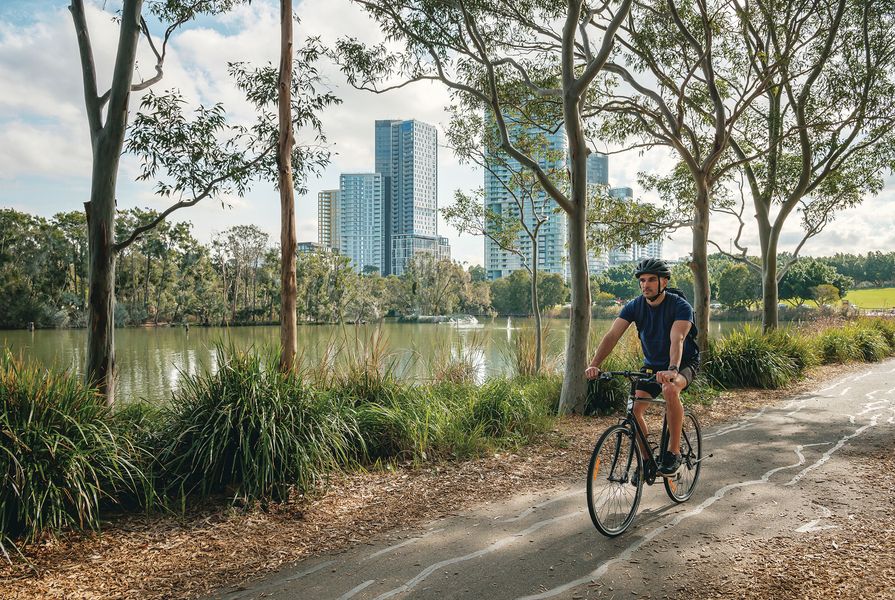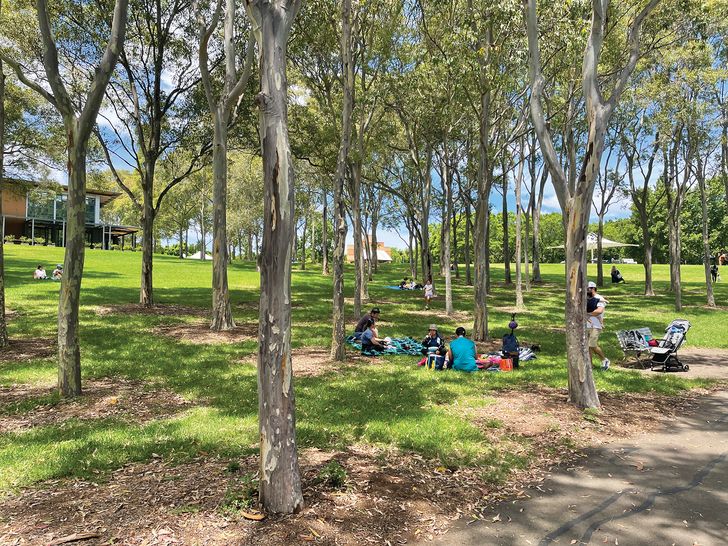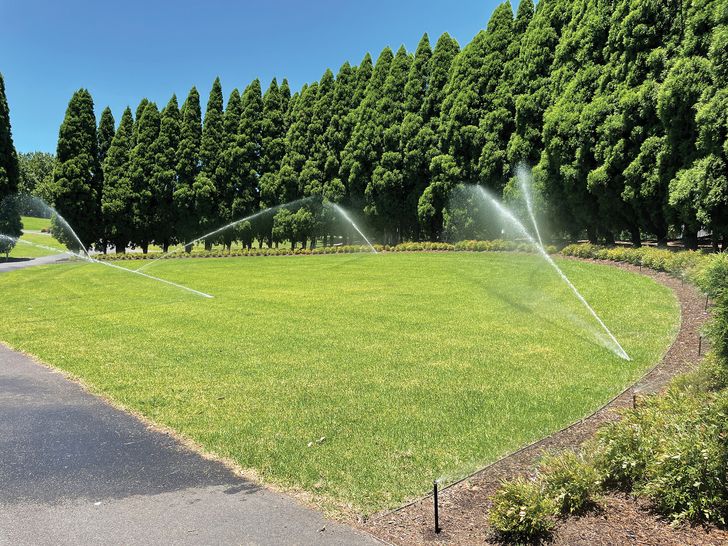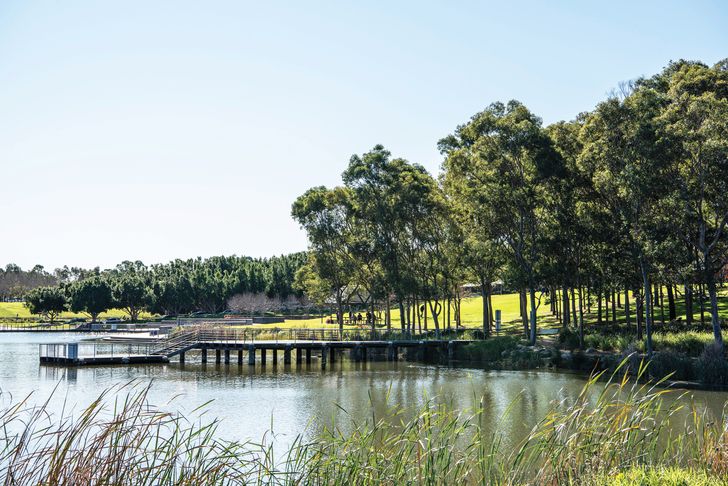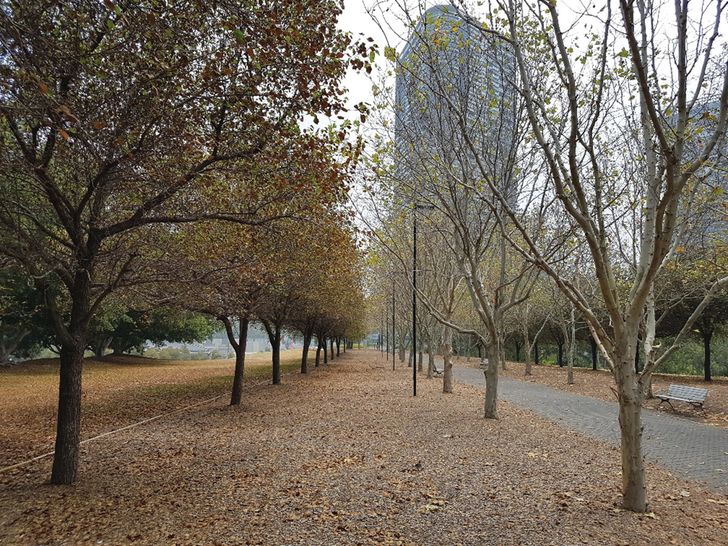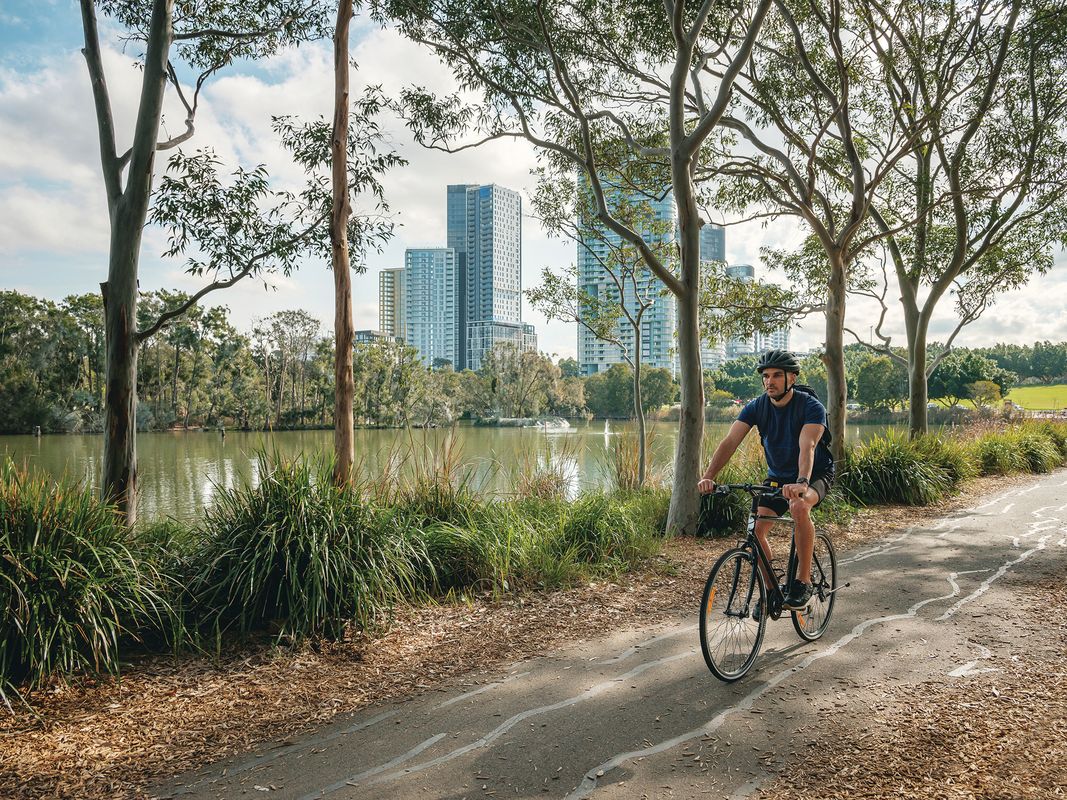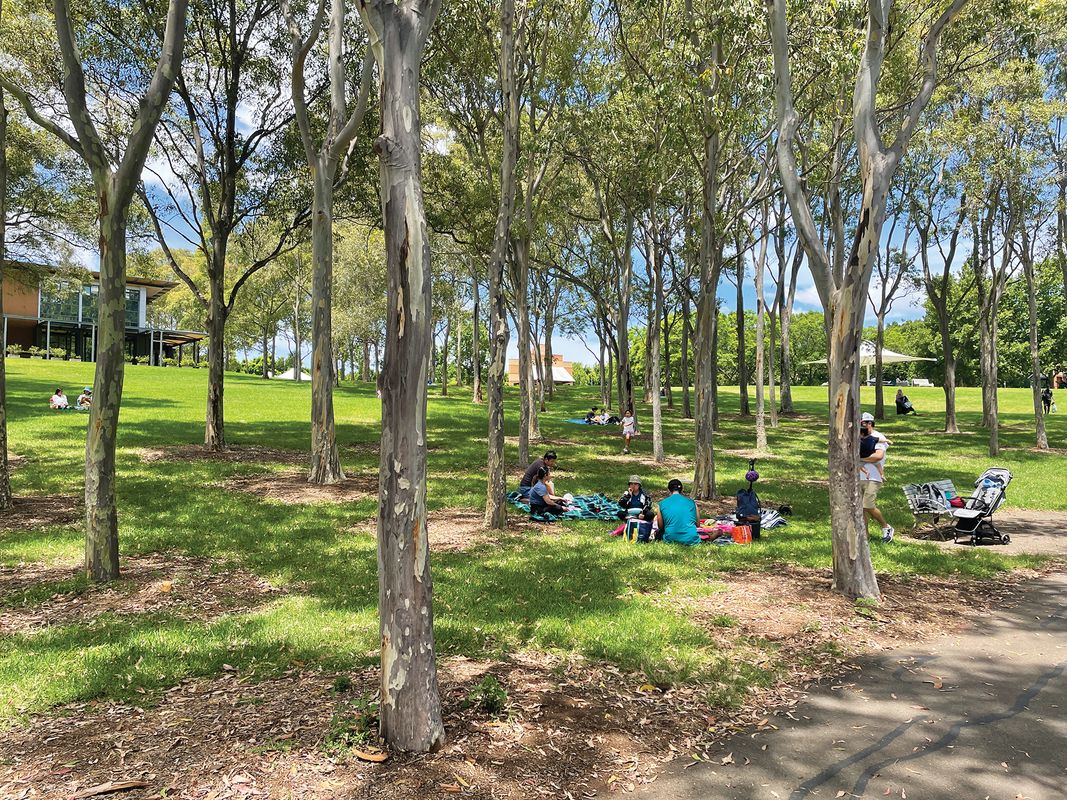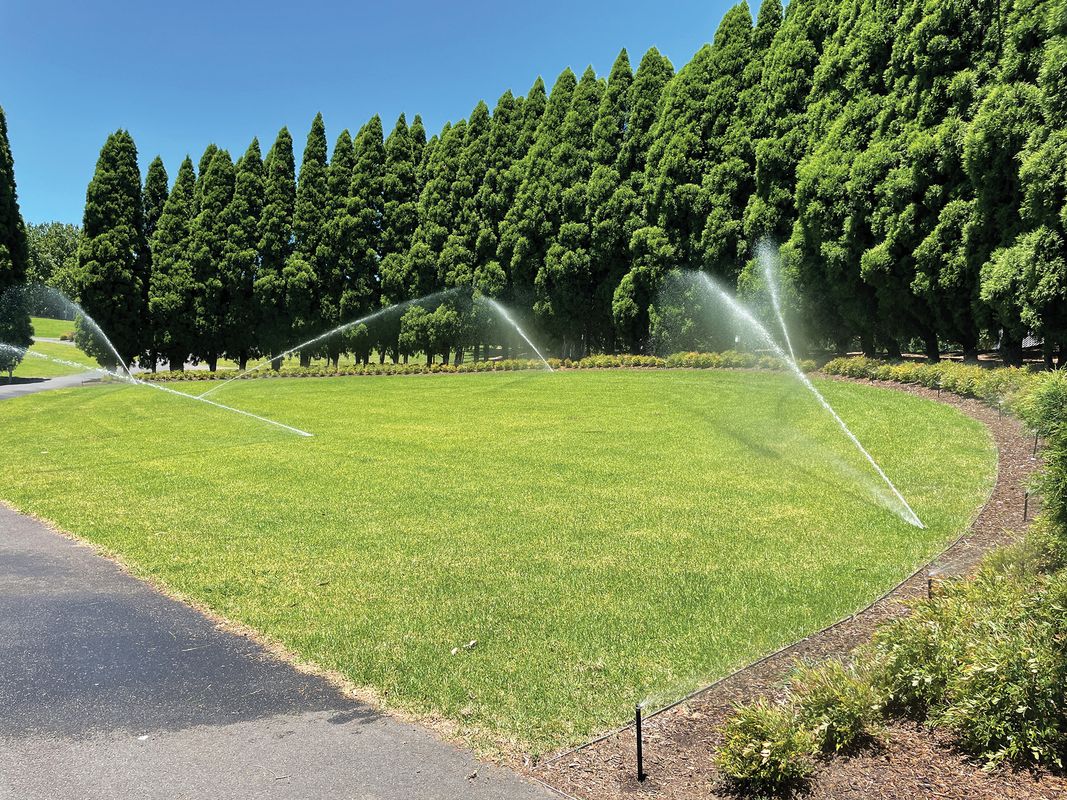Global urbanization continues, while at the same time, cities in Australia and beyond are hotspots of rising temperatures. Across the world, urban densification and expansion are inevitably resulting in more capping of soil and less vegetation, which is in turn leading to additional warming. The heat island effect, urban overheating, record-breaking extreme heat, heat shelter programs, soaring energy needs for cooling, increasing thermal discomfort and loss of lives are realities now shared by cities around the world every year. Planners and landscape architects face the challenging task of balancing the increasing amount of urban hardscape with the need for green and open space.
In densifying cities, public parks deliver reams of functions and services, from providing space for recreation and social interaction, to fostering biodiversity, assisting in flood prevention, raising property values and many more. From a scientific perspective, cooling is the primary service delivered by urban parks today.
A large planting of spotted gums at Bicentennial Park provides ample shade for picnics on hot days.
Image: Sebastian Pfautsch
The irrigation system embedded in Bicentennial Park is the lifeline for plants. Irrigation usually takes place at night to prevent interference with visitors.
Image: Sebastian Pfautsch
In parks, air temperatures can be 3 degrees Celsius lower and surface temperatures more than 10 degrees Celsius lower than nearby built-up areas. Depending on surface morphology and a park’s watering status, as well as the speed and direction of wind, the cooler air from inside a park can lower air temperatures hundreds of metres – even several kilometres – downwind. This phenomenon is known as the park cool island (PCI) effect, in contrast to the urban heat island effect.
Designing and managing parks to maximize the PCI effect is an appropriate response to rising urban heat issues. If we can’t fit new parks into our cities due to the commercial value of urban land, then we should be cranking up the capacity of existing parks as natural airconditioning systems. The PCI effect has been the subject of empirical and modelling studies for more than a decade. However, the key principles that can help us to gain maximum cooling effects are not yet mainstream knowledge in landscape design or park management applications.
In the design of a new park, species selection, the arrangement of plantings, the direction of the wind, and whether and how water is collected and stored for irrigation will all influence the magnitude of the PCI effect. In existing parks, the best way to maximize this effect is to provide vegetation with optimal access to soil moisture. Tall trees with large, dense crowns are the superstars when it comes to lowering air temperatures outside parks. Turf areas also play an important role in reducing surface temperatures and will have a positive influence on human thermal comfort inside of the park.
An early-morning view across Bicentennial Park towards the central precinct of Sydney Olympic Park.
Image: Sydney Olympic Park Authority
The project SIMPaCT (Smart Irrigation Management for Parks and Cool Towns), currently taking place in Bicentennial Park at Sydney Olympic Park, is driven by the principle of optimal hydration. The project team is working on an approach that optimizes soil moisture conditions to maximize the delivery of coolth inside and downwind of the park. Machine learning is being used to optimize irrigation management through the creation of a digital twin of the site. Over several months and thousands of simulations, the algorithms have been “learning” how park irrigation produces optimal soil moisture conditions for different vegetation types under a wide range of weather conditions.
The digital twin receives real-world data from more than 250 sensors situated across the park that measure soil moisture, air temperature, wind speed and rainfall. The artificial intelligence (AI) module uses this continuous data stream for “nowcasting” (observing and reporting current conditions), while predicted weather patterns from the Bureau of Meteorology are used for forecasting (predicting and reporting of anticipated conditions). Past simulations are used to evaluate how well conditions were predicted. During these processes, the AI module will become increasingly smart, understanding how current and anticipated environmental conditions result in observed soil moisture levels. As optimal soil moisture conditions for each vegetation type are set, the module learns to deliver these conditions based on its “knowledge” of cause and effect.
When the simulations of cause and effect in the digital twin reach the point where they show that optimal soil moisture status is being permanently achieved, the AI module will gradually take over management of the irrigation system in Bicentennial Park itself. The goal of SIMPaCT is the provision of optimal soil moisture levels for all vegetation types in the park. Under these conditions, the plants in the park will operate at their maximal rates of transpiration, which in turn results in the highest degree of air cooling.
Beyond the park’s physical boundaries, the SIMPaCT project will also involve streaming the environmental data onto the internet to enable park visitors and residents of Sydney Olympic Park to check live park conditions using maps and dashboards. These digital tools will support decision-making around when and where to spend time in the park – for example, by enabling a visitor to choose their jogging route across the park in order to remain in the site’s coolest air temperatures. Urban parks and other green spaces are set to become one of the most important defences against rising temperatures in our cities. The combination of smart tech to physically cool the environment inside and around the park, and to inform the activities of park users, opens new pathways in relation to how public parks can be designed, managed and experienced.
The park’s Lake Belvedere provides critical habitat for local fish species as well as resident and migratory water birds.
Image: Sydney Olympic Park Authority
London plane trees and ornamental pear trees experienced water stress at Bicentennial Park in January 2020, when a mechanical fault affected the irrigation system.
Image: David Martin
In 2020, UK-based landscape architect William Butterworth, who founded The Design Charity, acknowledged that “many colleagues feel that a beautiful natural landscape should show no trace of the hand of man, let alone come embedded with its own networked array of high technology.”1 Whether we agree or disagree with this observation, the retention of urban parks as cool, green oases in increasingly hot and dry countries like Australia, Pakistan, Spain and the southern United States will require innovative design and built environment professionals who are not shy to engage with – and even drive the development of – progressive technology.
At Sydney Olympic Park, landscape managers have experienced firsthand the devastating effects that extreme heat and lack of water can have on our public green assets. In early January 2020, established vegetation throughout the park was severely damaged over the course of only a few days by the confluence of drought, a heatwave and a mechanical failure in the park’s irrigation system. With the park’s PCI effect drastically lowered, visitors experienced a very different kind of park in the following weeks.
Under rapidly changing environmental conditions, we need to think differently about how we approach the design and management of urban green spaces. As cities continue to densify and space is at a premium, our public green spaces need to deliver key functions to maximize livability. If our rapidly heating cities are to produce more coolth, designers and managers will need to actively embrace greater technical innovation in the built environment. Initiating this work in our parks offers important design and management strategies and tools for Australia’s fast-changing cities.
1. William Butterworth, “Smart Green Spaces,” Medium.com, 17 August 2020, medium.com/transformative-technology/smart-green-spaces-b234b4830c30 (accessed 9 March 2022).
Source

Practice
Published online: 23 May 2022
Words:
Sebastian Pfautsch
Images:
David Martin,
Sebastian Pfautsch,
Sydney Olympic Park Authority,
Sydney Olympic Park Authority
Issue
Landscape Architecture Australia, May 2022

